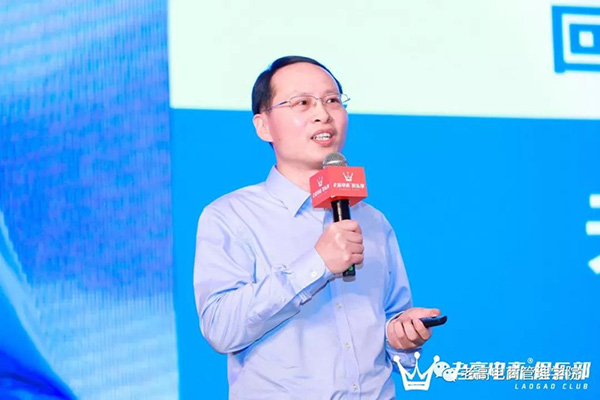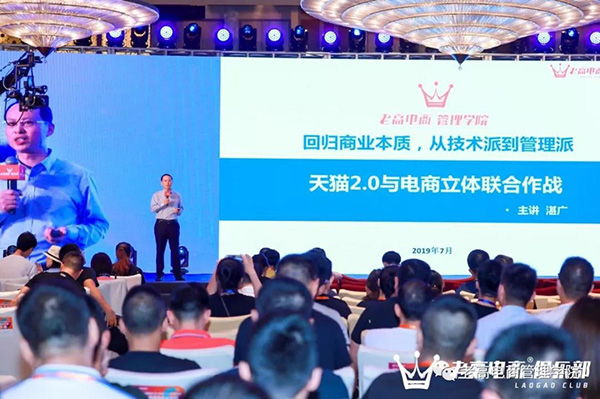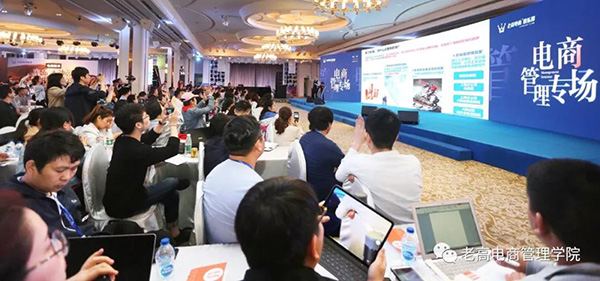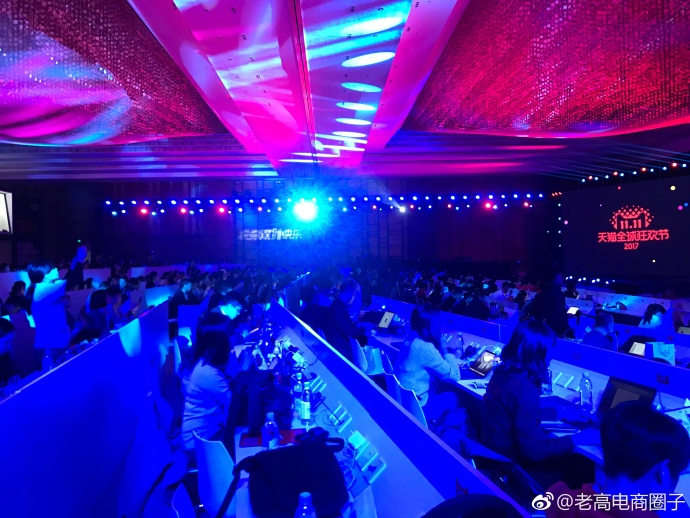In the first half of 2019, traffic declines, sales declines and profit declines, and this "three consecutive declines" caused panic among everyone. A survey by Laogao E-commerce Club shows that more than half of e-commerce companies have stagnated or declined performance. This has both the problems of long-term accumulation and the factors of platform tools and technology upgrading. Many e-commerce companies are veterans who have been through the battlefield. In the past, when they encountered crises, everyone could always find a solution, but this time they seemed helpless and confused.

1. Behind the competition in stores is organizational competition
Lao Gao once told me: "E-commerce achieves a management level of 100 million, which is equivalent to the level of 20 million in traditional industries." This is the conclusion he came to in-depth observations of more than 4,000 e-commerce member bosses in the past nine years.
In the first half of this year, our college began to systematically study a large number of samples of e-commerce companies and traditional retail brands, and further discovered the secrets. Please see the comparison and analysis below.
If traditional retail brands do not open thousands of stores, they dare not say that they have occupied the national market. In order to cope with the expansion of space and time, they must do a good job in organization and talent echelons and systematically improve management level. With the advantages of Internet platforms and technology, e-commerce brands can cover the national market by just opening a flagship store. This is the "dimensionality reduction attack".
Therefore, traditional brands are very different from e-commerce companies in their understanding of market and management. Traditional retail understands competition as competition for brands and competition for organizations; while e-commerce companies often understand competition as competition for stores and competition for hot products.
During the traffic bonus period, a team of dozens of e-commerce personnel can achieve sales of over 100 million yuan. Therefore, it doesn’t matter if the organizational construction is ignored and the construction of professional talent echelons is built. However, the problem is: when traditional brands awaken, they also learned to use Internet platforms and technical conditions, which immediately made e-commerce brands lose the advantage of "dimensionality reduction attack".
Now, competition has returned to its original point: brand competition, organization competition, management competition and supply chain competition, etc. In these dimensions, e-commerce has no advantages compared to traditional brands.
We have analyzed many cases of e-commerce brands. Everyone is busy on the surface, but in fact, various operating indicators are increasingly deviating from the health value, such as human efficiency, gross profit margin, ROI, inventory turnover rate, UV contribution value, and proportion of old customers, all of which are continuing to decline. This also explains why many Taobao brands end up losing their city and land under the counterattack of traditional brands.
2. Behind the traffic competition is the competition for the brand camp
You may say that the important reason why Taobao brands lose their power lies in the platform's focus on supporting well-known offline brands. In fact, the platform is concerned about the traffic of offline big brands in the early stage, and in the later stage, it is concerned about whether each brand can bring higher UV value. This is the real-time horse racing mechanism. When traffic becomes more and more expensive, Taobao and Tmall will never allow wasting any traffic or any opportunity to display. After all, competition is fair, and ultimately speaking, it depends on brand strength.

Has e-commerce traffic really declined? In fact, overall growth is still growing, but the growth rate has slowed down. Moreover, due to the increase in user purchase penetration, traffic still increases for each category. For example, in 2018, there were 240 million users who purchased beauty products. In the next three years, the number of users who purchased beauty products will increase to 400 million. So, where did the traffic go?
Recently, Tmall flagship store 2.0 announced the creation of a "super brand flagship store". This year, there will be large stores with sales of 2 billion yuan, and next year, there will be large stores with sales of 4 billion yuan. This is the strategy of losing cars and protecting the coaches adopted by Tmall during the period of declining traffic growth, allowing the flagship stores of various sub-categories to obtain more traffic resources, thereby ensuring the strategic goal of "Tmall is the main battlefield for brand growth."
This answers the above question: traffic was intercepted by the top brand flagship stores.
In the creation of super brand flagship stores, the leading brands will further firmly control the first camp of various categories and intercept most users with their professional organizational capabilities, strong supply chain system and extensive brand influence.
In the next few years, e-commerce will no longer be a competition between offline brands and Taobao brands, but a competition between the top camps and the waist camps in sub-categories. There is no doubt that the situation of merchants at the waist and legs will be even more difficult, and a new round of reshuffle is inevitable.
However, many e-commerce companies are still unable to understand the significance of building a good brand flagship store, and are still intoxicated by building more and more small waist stores. The students in our presidential class have 20 to 30 stores, which are considered to be of medium level, and some local tycoons have 70 to 80 stores. On the surface, it seems that opening more stores will increase traffic and sales. In fact, indicators such as gross profit margin and ROI are relatively low, which is not helpful to the company's profit; more serious is that it disperses the company's valuable resources and gives up the opportunity to build a good store.
3. Behind the competition for hot products is competition for corporate groups
Many e-commerce companies focus on popular product groups and store groups. In fact, behind the popular product groups and store groups is the competition among supply chain companies .
What is a supply chain enterprise group? It refers to the sum of all cooperative entities in the entire supply chain system from product research and development to procurement, production, quality inspection, warehousing and logistics. For example, Lin's Wood Industry has connected more than 200 factories upstream, and these more than 200 factories have connected more upstream raw material suppliers, thus forming a huge supply chain enterprise group. Another example is Three Squirrels, which uses digital management of flexible supply chains, covering more than 300 suppliers. When peer companies compete with Lin's Wood Industry and Three Squirrels, they are actually competing with the huge supply chain enterprise group behind them.

Of course, to control the huge supply chain enterprise group and establish a collaborative combat mechanism is also a test of the company's organizational capabilities and efficiency, and also requires the front-end order scale as support. We should not fall into the entanglement of "there are chickens first or the eggs first". In fact, the supply chain and sales scale promote each other. For example, Double Eleven has expanded the supply chain of e-commerce. Conversely, the expansion and efficiency of the supply chain have increased the sales scale.
In short, the competition between products and brands in the front desk, the competition between organizational capabilities and efficiency in the middle desk, and the competition between supply chain enterprises in the back desk, this is the complete system of e-commerce competition. Most e-commerce companies focus their energy and tactics on building hot products, ignoring the construction of front-end, middle-end and back-end systems, thus putting themselves at an overall disadvantage in competition. This is the deep concern behind the decline in e-commerce profits.
4. Five tips for e-commerce strategic transformation
We are at a historical turning point, and many e-commerce companies are anxious, confused and confused. This is actually a new round of opportunity. For e-commerce that is early awakening and transforming early, there is still a chance to take the lead in the competition in the second half of e-commerce and regain youth and vitality.
How to jump out of the current turbulent vortex? The key is 5 grasps.
First, strategic review, answer what to rely on for the next three years, and combine annual strategic deployment with annual performance goals. The original store group and business group are examined, and the strategy focuses on the main business, and the future strategic focus is on brand flagship stores. Determine resource investment priorities, focus on supporting existing profitable businesses, and focus on developing new businesses in the next two years. It is particularly important to decisively cut off losses and inefficient non-main businesses, never fight, stop losses quickly and ensure sufficient cash flow.
Second, if the strategy is clear, it depends on the organization and team to achieve it. Nowadays, many e-commerce companies lay off employees, and there are many professional talents in the talent market. Foresighted e-commerce companies should invest their resources in the construction of professional talent echelons, establish functional departments with clear division of labor and efficient and smooth business processes, and at the same time, match and establish a scientific and reasonable salary, rank and performance appraisal system. The future is full of risks and uncertainties. Only efficient organization and professional teams can enable us to control uncertainty and find a safe zone in a chaotic business environment.
Third, product innovation, gather organizational capabilities and corporate resources, and do a good job in innovation in flagship products. Innovation includes disruptive innovation and micro-innovation. For small and medium-sized enterprises, it is more suitable for micro-innovation and continuous improvement and improvement. Xiaogou Electric's technology R&D reserves are two years ahead of its peers, and for small and medium-sized enterprises, they only need to be ahead of their competitors for 3 months. There are issues of opponents imitation and plagiarism here. Imitation and plagiarism take time. In many cases, the time difference and slight advantages, as well as precise user operations, occupying the minds of customers, is enough to stand out and establish competitive barriers.
Fourth, brand vision, endorsement, content and user service system. This is soft power, using style, tone, personality, emotion, content, culture and high-quality service experience to win the reputation and loyalty of users. For the fast-moving consumer goods daily necessities industry, brands whose repurchase accounts for more than 50% of the market are marked by the maturity of the brand.
Fifth, supply chain integration. In recent years, many e-commerce companies and suppliers that are participating in shares and acquiring upstream production companies and suppliers have set off a wave of online and offline integration. It should be noted that you should first control the key links, give up inefficient links without technical content, and don’t be greedy for too many things to make big things. At the same time, it is necessary to improve organizational capabilities and IT digital management capabilities, and improve the coordination and response speed of supply chain enterprise groups.

August event preview
Looking at the changes in the e-commerce industry in 2019, e-commerce games emerge one after another. Looking for more e-commerce development and trends is the current pain point for most e-commerce people. However, no matter how the external environment changes, building functional organizations, building talent echelons, improving company business processes, and improving operational efficiency are the fundamental guarantees for the company to win the present and future. Building a vibrant learning organization and a talent team that dares to challenge new businesses is the company's greatest wealth.
The August management special session of Laogao E-commerce Club is a management course tailored for e-commerce people. It answers one by one the management problems that e-commerce people may encounter and teaches you how to manage them step by step. If you want to participate in this very valuable course, click the mini program below to register! Limited quota, first come first served!






![#Laogao E-commerce Newsletter# [October 14 E-commerce Morning Newsletter]](/update/1665713430l501859969.jpg)

![#Laogao E-commerce Newsletter# [E-commerce Evening News on August 17]](/update/1628762699l369066323.jpg)

 EN
EN CN
CN
